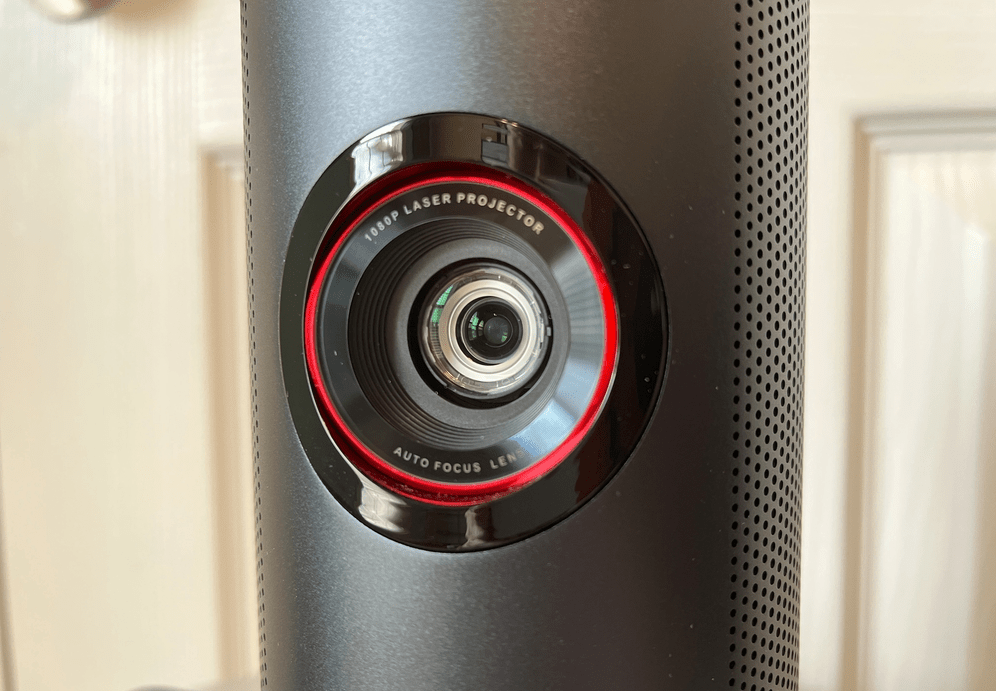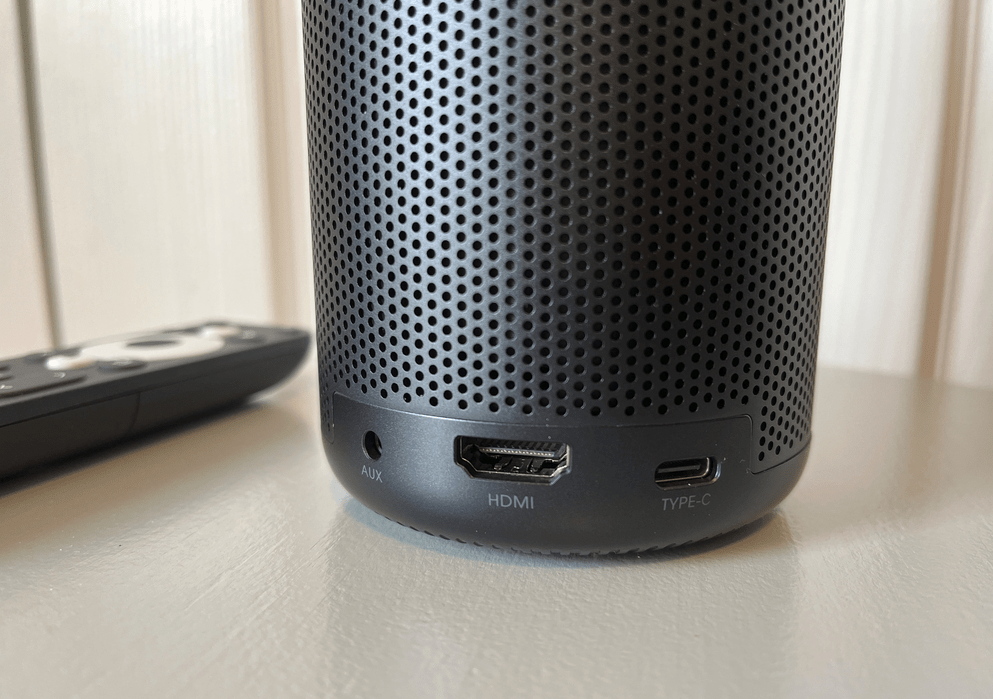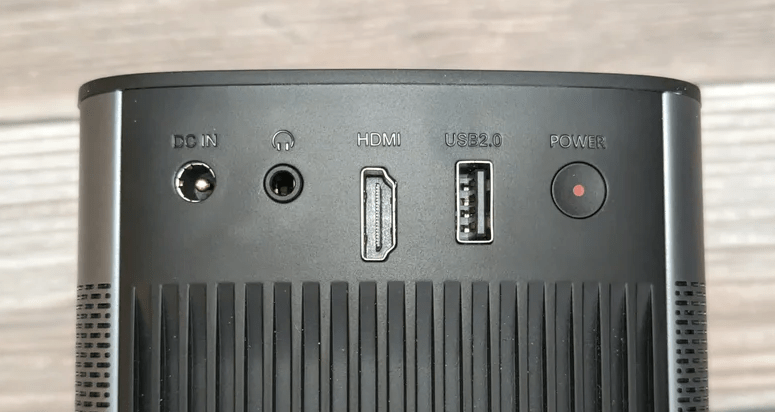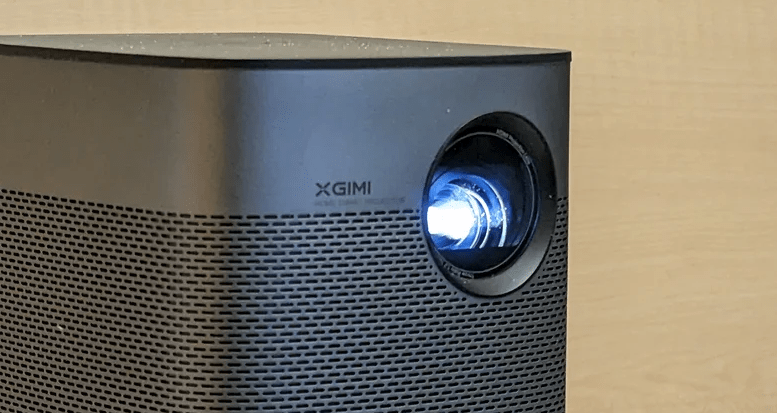At gagadget.com, your trust is our priority. We follow strict quality standards in our research, tests, and analysis of video projectors, to give you the best experience. Learn more
Nebula Capsule 3 vs XGIMI Halo Plus
Hey everyone, it's Jim. Today, I'm comparing two popular portable projectors: the Nebula Capsule 3 and the XGIMI Halo Plus. Both offer 1080p resolution, built-in batteries, and smart features in compact, travel-friendly designs. But they also have some key differences in brightness, audio, and overall performance.
I've spent hands-on time with both the Capsule 3 and Halo Plus, evaluating picture quality, ease of use, battery life, and more. In this in-depth comparison, I'll break down how these two mini projectors stack up and help you decide which one best fits your on-the-go viewing needs. Let's dive in!
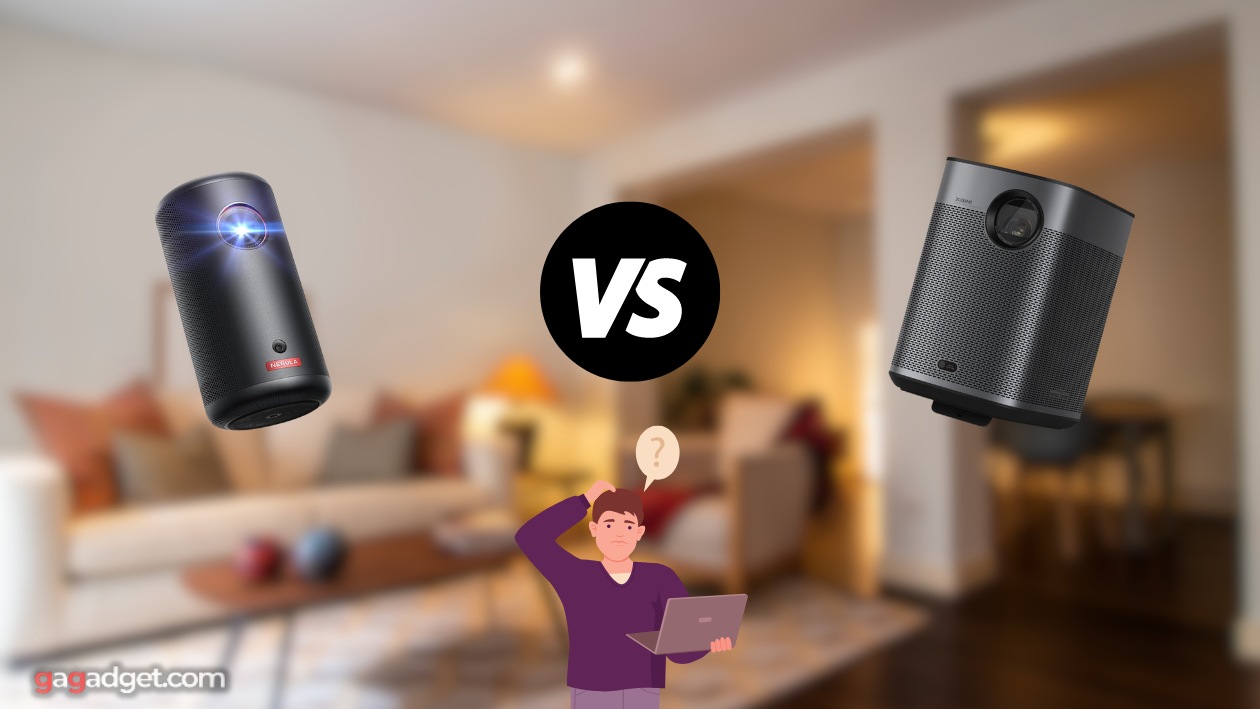
Nebula Capsule 3 vs XGIMI Halo Plus: Quick Overview
I respect your time and aim to provide only the essential information, skipping the fluff.
Here's a brief summary for those short on time: The Nebula Capsule 3 and XGIMI Halo Plus are both highly portable 1080p projectors with onboard streaming smarts. The Halo Plus is significantly brighter at 900 ANSI lumens vs the Capsule 3's 200 lumens. It also has a longer throw distance, larger max screen size, and true stereo speakers. The Capsule 3 fights back with licensed Netflix support, a more compact soda can design, and lower price.
For most buyers, I recommend the XGIMI Halo Plus. The much higher brightness and bigger sound make it more versatile for outdoor use and larger screen sizes. But if you value the Capsule 3's smaller form factor and don't need max lumens, it's an excellent ultra-portable pick - especially for Netflix fans.
Table of Contents
- Nebula Capsule 3 vs XGIMI Halo Plus: Full Comparison
- XGIMI Halo Plus vs Nebula Capsule 3: Design
- Capsule 3 or Halo Plus: Owner Reviews
- Nebula Capsule 3 and XGIMI Halo Plus Alternatives
- Conclusion: Should You Buy the Capsule 3 or Halo Plus?
Nebula Capsule 3 vs XGIMI Halo Plus: Full Comparison
| Specs | Nebula Capsule 3 | XGIMI Halo Plus |
| Image |

|
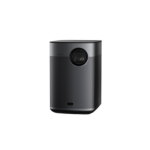
|
| Resolution | 1920 x 1080 (Full HD) | 1920 x 1080 (Full HD) |
| Brightness (ANSI Lumens) | 200 | 900 |
| Display Technology | DLP x1 | DLP x1 |
| Lamp Type | LED | LED |
| Lamp Life | 30,000 hours | 30,000 hours |
| Throw Ratio | 1.20:1 | 1.20:1 |
| Image Size | 20" - 100" | 40" - 200" |
| Keystone Correction | Auto, Horizontal & Vertical | Auto, Horizontal & Vertical |
| Focus | Auto | Auto |
| Built-in Battery | Yes, playtime up to 2.5 hours | Yes, playtime up to 2 hours |
| Built-in Speakers | 8W (mono) | 2 x 5W (Harman Kardon) |
| Wi-Fi Connectivity | 2.4/5Ghz | 2.4/5Ghz |
| Dimensions (W x D x H) | 3.15" x 3.15" x 5.91" | 4.4" x 5.7" x 6.7" |
| Weight | 1.3 lbs | 3.5 lbs |
| Release Year | 2023 | 2021 |
The biggest difference between these projectors is brightness. At 900 ANSI lumens, the XGIMI Halo Plus is over four times brighter than the 200-lumen Nebula Capsule 3. In my testing, that translates to a much more vivid, lights-on friendly picture at larger sizes. The Capsule 3 is best saved for nighttime or dark room viewing under 80", while the Halo Plus can pull off 100"+ images with ease.
That brightness advantage also gives the Halo Plus more placement flexibility. Both projectors have a 1.2:1 throw ratio, but the Halo Plus' higher lumen output allows for a wider range of screen sizes. It needs about 6.5 feet for a 100" image vs roughly 8 feet for the Capsule 3. And the Halo Plus tops out at a massive 200" compared to the Capsule 3's 100" maximum.
On the flip side, the Capsule 3 has the edge in ultra-portability. At just 1.3 pounds and 3" wide, it's less than half the size and weight of the 3.5-pound, 4.4" diameter Halo Plus. This makes the Capsule 3 easier to slip in a bag or even a large pocket for on-the-fly movie nights. I also find its upright soda can design a bit more stable on uneven surfaces like a picnic table or airplane tray.
Both projectors feature auto focus and auto keystone correction for hassle-free setup. In my experience, the Capsule 3 is a touch faster and more accurate with its adjustments, but both did an admirable job squaring the image with minimal fiddling. Ditto for their respective Android TV and Google TV interfaces, which offer snappy navigation and a wide selection of streaming apps.
A key advantage for the Capsule 3 is its direct Netflix access. Unlike most portable projectors (including the Halo Plus), the Capsule 3 is licensed to include a Netflix app right out of the box. This saves you the hassle of side-loading or connecting an external streaming device. If you're a Netflix die-hard, that alone could be worth sacrificing some brightness.
Battery life is comparable, with both projectors lasting around 2-2.5 hours on a charge. That's enough for most feature-length movies, but you'll want to keep a USB-C cable handy for longer viewing sessions. And don't expect either one to power a streaming stick - their USB ports are for service only.
As for sound, the Halo Plus easily beats the Capsule 3. Its dual 5W Harman Kardon speakers offer loud, clear stereo audio that can fill a small to mid-sized room. The Capsule 3's single 8W driver gets decently loud but sounds thin and cramped by comparison, especially at higher volumes. Both support Bluetooth output to external speakers or headphones.
XGIMI Halo Plus vs Nebula Capsule 3: Design
Nebula Capsule 3 Design
XGIMI Halo Plus Design
The Nebula Capsule 3 has a unique cylindrical design that resembles a tall soda can. It stands 5.9" high and 3.1" wide, with the lens and IR sensor at the top and ports & vents along the bottom edge. The matte black aluminum chassis is sleek and minimalist, with a single power button and subtle branding. At just 1.3 pounds, it's very easy to grip in one hand or toss in a bag.
The XGIMI Halo Plus has a more traditional rectangular shape that's still compact and travel-friendly. Its rounded edges, gray fabric grille, and matte white plastic are stylish yet durable for on-the-go use. At 6.7" tall and 4.4" wide, it's about 30% bulkier and 1.5x heavier than the Capsule 3, but still easily portable at 3.5 pounds. The front-facing lens, auto-focus sensor, and Harman Kardon speakers are thoughtfully positioned.
Both projectors have excellent build quality with minimal light leakage and well-damped buttons. The Capsule 3's metal chassis feels slightly more premium than the Halo Plus' plastic, but both are reassuringly solid for their size and price. I'm confident either one could handle regular travel without babying - though I still recommend a case for protection.
Capsule 3 or Halo Plus: Owner Reviews
Let's see what actual owners have to say about their experiences with the Nebula Capsule 3 and XGIMI Halo Plus projectors:
Nebula Capsule 3 Owner Reviews:
Praises: "The portability and convenience are unmatched. It's so quick and easy to set up for impromptu movie nights virtually anywhere. The auto focus and keystone are nearly instant."
"I love being able to watch Netflix directly through the projector without any extra dongles or devices. The interface is snappy and very intuitive coming from other Android TV devices."
***
Drawbacks: "200 lumens is barely enough for nighttime viewing and even then only up to maybe 60-70 inches. Don't expect a vibrant picture in anything but complete darkness."
"The mono speaker gets decently loud but sounds pretty weak and tinny, especially for action movie soundtracks and music. You'll definitely want an external speaker or headphones."
XGIMI Halo Plus Owner Reviews:
Praises: "The 900 ANSI lumens make a huge difference for picture quality, especially with ambient light. I'm getting 100"+ images that still look bright and colorful, even during the day."
"I'm really impressed by the built-in speakers - they sound great for a projector this size. Plenty of volume and clarity for a small to mid-sized room without any external audio."
***
Drawbacks: "The lack of Netflix support is a bummer. You can sideload the app or use a external device but both are a hassle compared to other streaming services."
"At over 3 pounds it's definitely portable but not exactly pocket-friendly. You'll need a decent sized backpack or bag to haul it around, along with the charger and cables."
Overall, owners of both projectors are very satisfied with their all-in-one portable designs and ease of use. Capsule 3 buyers frequently praise the soda can styling, grab-and-go convenience, and direct Netflix access. A few wish for more lumens and punchier audio but understand the trade-offs for the ultra-compact size.
XGIMI Halo Plus owners rave about the high brightness, sharp 1080p resolution, and powerful Harman Kardon sound. The versatile throw distance and 3-second auto setup also earn high marks. The lack of Netflix out of the box is an annoyance but rarely a dealbreaker. Both projectors receive kudos for their fast, intuitive Android interfaces.
Nebula Capsule 3 and XGIMI Halo Plus Alternatives
If you're not sold on either the Capsule 3 or Halo Plus, here are a couple other capable portable projectors to consider:
- XGIMI MoGo Pro: A 1080p portable with 300 ANSI lumens, Harman Kardon sound, Android TV 9.0, and a lightweight 1.9 pound chassis - a nice middle ground between the Capsule 3 and Halo Plus;
- ViewSonic M1 Mini Plus: An affordable 1080p option with 120 LED lumens, dual Harman Kardon speakers, Wi-Fi, and a compact 0.99 pound design - ideal for tight budgets and travel.
The XGIMI MoGo Pro strikes a good balance between the Capsule 3 and Halo Plus. It's brighter and louder than the Capsule 3 but more compact than the Halo Plus at under 2 pounds. The 1080p resolution, Android TV interface, and auto keystone correction are also solid. Just note the lack of a built-in battery and Netflix support.
For buyers on a tighter budget, the ViewSonic M1 Mini Plus offers a compelling ultra-portable experience. The 120 lumens and WVGA 854x480 resolution can't match the Capsule 3 or Halo Plus, but the inclusion of Wi-Fi, streaming apps, 360-degree speakers, and a sub-1 pound design is impressive for the price. Battery life is only 1.5 hours, however.
Conclusion: Should You Buy the Capsule 3 or Halo Plus?
After extensive hands-on testing, it's clear that the Nebula Capsule 3 vs XGIMI Halo Plus are both exceptional portable projectors. With their 1080p resolution, Android TV smarts, auto focus and keystone, and grab-and-go designs, they're tailor-made for big screen viewing anywhere you can find a wall and Wi-Fi signal. From backyard movie nights to business presentations, they pack an impressive A/V toolkit into genuinely coat pocket-friendly forms.
For most buyers, I recommend the XGIMI Halo Plus. The 900 ANSI lumen brightness is a revelation for on-the-go projection, allowing for vivid, colorful 100"+ images even with moderate ambient light. Paired with the crisp 1080p resolution, punchy Harman Kardon sound, and flexible throw distance, it's hands-down the more versatile and living room-worthy pick - albeit at a size and weight penalty to the Capsule 3.
That said, the Nebula Capsule 3 remains a stellar choice for those who prioritize ultra-portability. The sleek soda can design is wonderfully pocketable, while the auto setup and direct Netflix access make it a cinch to fire up your favorite shows virtually anywhere. Yes, the 200 lumen brightness and mono speaker limit screen size and impact. But for nighttime viewing under 80", it's every bit as user-friendly and engaging as the Halo Plus.
Ultimately, you can't go wrong with either projector for an immersive on-the-go A/V experience. If you want the biggest, most vibrant image and sound for the size, snag the XGIMI Halo Plus. If you need the smallest, most self-contained design and can live with less light output, go for the Nebula Capsule 3. Both will open your eyes to how far portable projection has come - and how many places you can now enjoy true big screen thrills beyond the living room.
Thanks for reading! Let me know if you have any other questions as you shop for your next on-the-go theater. I'll do my best to help you choose the perfect pint-sized powerhouse for your needs and budget. Happy travels and happy viewing!
Go Deeper:
